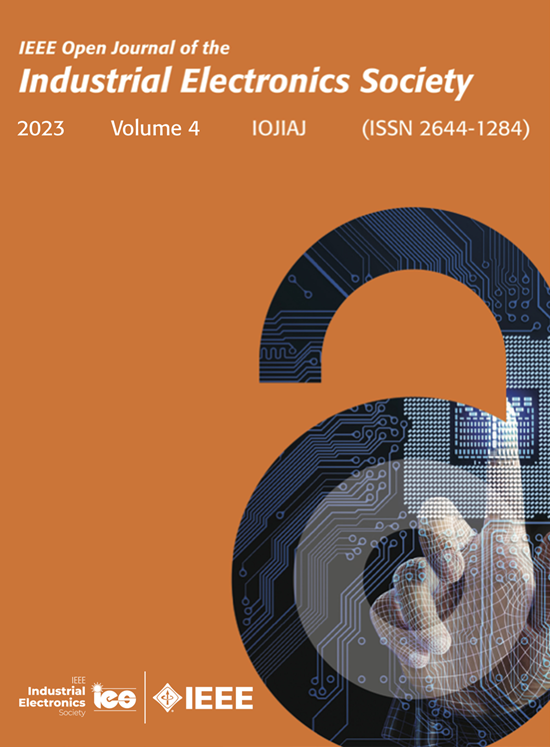Control of a Single-Phase Islanded Microgrid Based on Virtual Oscillator Control Enhanced With Power Limitation and Robust Distributed Secondary Control
IF 4.3
Q1 ENGINEERING, ELECTRICAL & ELECTRONIC
IEEE Open Journal of the Industrial Electronics Society
Pub Date : 2024-12-18
DOI:10.1109/OJIES.2024.3519809
引用次数: 0
Abstract
Virtual oscillator control (VOC) has emerged as an alternative solution for controlling parallel connected inverters in microgrids (MGs) due to its self-synchronization and advanced control capabilities. To enhance the operations of VOC-based inverters, this article implements a power limitation controller that dispatches power according to the operating conditions and the primary source availability. Therefore, this mechanism allows the inverter to adapt to the intermittent nature of renewable energy sources and the operational constraints of batteries. The controller can limit both active and reactive power to specified setpoints. When an inverter reaches its power limit, the others that are not restricted by the power limitation take on the extra load. On top of VOC, a robust distributed secondary control was developed to restore the MG voltage and frequency. The controller uses the local frequency and voltage and the powers from the neighboring nodes obtained through a sparse communication network. Last, as part of a single-phase MG configuration, single-phase inverters generate a second-order current component in their dc-link that needs to be restricted from flowing to the dc source. To address this issue, this article implements a minimalist active power decoupling method adapted to the VOC inverter. Extensive simulations and experiments were conducted to validate the operation of the proposed system.基于功率限制增强虚拟振荡器和鲁棒分布式二次控制的单相孤岛微电网控制
由于其自同步和先进的控制能力,虚拟振荡器控制(VOC)已成为微电网(mg)并联逆变器控制的替代解决方案。为了提高基于voc的逆变器的运行性能,本文实现了一种功率限制控制器,根据运行条件和一次电源的可用性进行功率调度。因此,这种机制允许逆变器适应可再生能源的间歇性和电池的运行约束。控制器可以将有功和无功功率限制在指定的设定值。当一个逆变器达到其功率限制时,其他不受功率限制限制的逆变器承担额外的负载。在VOC的基础上,开发了一种鲁棒分布式二次控制来恢复MG电压和频率。控制器利用稀疏通信网络获得的本地频率和电压以及邻近节点的功率。最后,作为单相MG配置的一部分,单相逆变器在其直流链路中产生二阶电流分量,需要限制其流向直流电源。为了解决这一问题,本文实现了一种适用于VOC逆变器的极简有功功率解耦方法。进行了大量的仿真和实验来验证所提出系统的运行。
本文章由计算机程序翻译,如有差异,请以英文原文为准。
求助全文
约1分钟内获得全文
求助全文
来源期刊

IEEE Open Journal of the Industrial Electronics Society
ENGINEERING, ELECTRICAL & ELECTRONIC-
CiteScore
10.80
自引率
2.40%
发文量
33
审稿时长
12 weeks
期刊介绍:
The IEEE Open Journal of the Industrial Electronics Society is dedicated to advancing information-intensive, knowledge-based automation, and digitalization, aiming to enhance various industrial and infrastructural ecosystems including energy, mobility, health, and home/building infrastructure. Encompassing a range of techniques leveraging data and information acquisition, analysis, manipulation, and distribution, the journal strives to achieve greater flexibility, efficiency, effectiveness, reliability, and security within digitalized and networked environments.
Our scope provides a platform for discourse and dissemination of the latest developments in numerous research and innovation areas. These include electrical components and systems, smart grids, industrial cyber-physical systems, motion control, robotics and mechatronics, sensors and actuators, factory and building communication and automation, industrial digitalization, flexible and reconfigurable manufacturing, assistant systems, industrial applications of artificial intelligence and data science, as well as the implementation of machine learning, artificial neural networks, and fuzzy logic. Additionally, we explore human factors in digitalized and networked ecosystems. Join us in exploring and shaping the future of industrial electronics and digitalization.
 求助内容:
求助内容: 应助结果提醒方式:
应助结果提醒方式:


